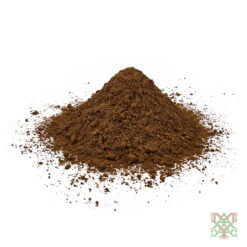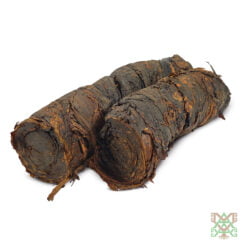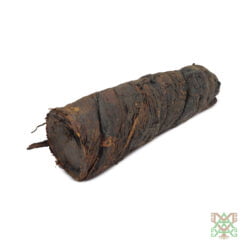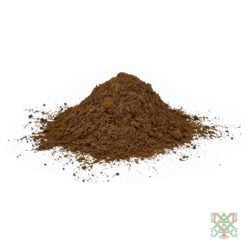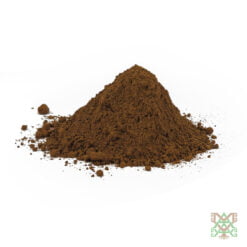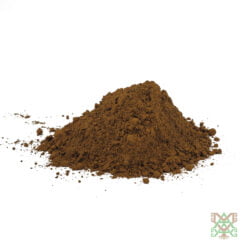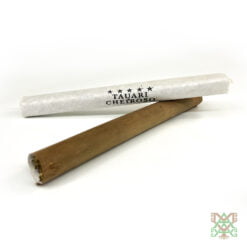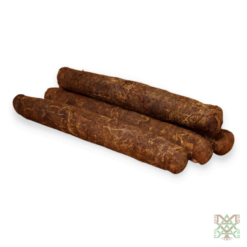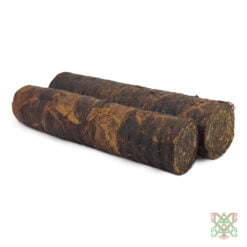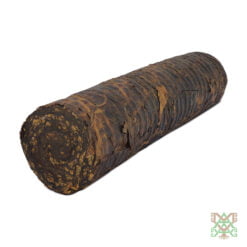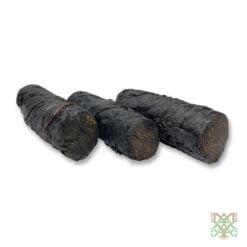Mapacho and Nicotiana Rustica: The Sacred and Versatile Tobacco
Botanical Information
Scientific Classification:- Kingdom: Plantae
- Clade: Angiosperms
- Clade: Eudicots
- Order: Solanales
- Family: Solanaceae
- Genus: Nicotiana
- Species: Nicotiana rustica
Morphological Characteristics:Growth Habit: Nicotiana rustica is an annual herb that can grow up to 1.5 meters in height. It is native to the Andean regions of South America but is now widely cultivated in various parts of the world, including Peru and Brazil.
Leaves: The leaves of Nicotiana rustica are large, oval to lanceolate, and have a distinct green color. They are thick and somewhat sticky due to the presence of glandular trichomes, which produce a potent aroma. The leaves contain a high concentration of nicotine, significantly more than the common tobacco species, Nicotiana tabacum.
Flowers: Nicotiana rustica produces clusters of tubular, yellow-green flowers that are highly fragrant. These flowers attract pollinators such as bees and butterflies, contributing to the plant’s reproductive cycle.
Seeds: The plant produces small, brown seeds that are used for propagation. These seeds are typically sown in well-drained soil and require ample sunlight and water to germinate and grow.
Cultural and Spiritual Uses
Mapacho in Shamanic Rituals: Mapacho is deeply embedded in the spiritual practices of indigenous tribes in the Amazon, particularly in Peru and Brazil. It is often used in shamanic rituals for incensing, where the smoke is believed to have protective and cleansing properties. Shamans use Mapacho smoke to ward off evil spirits, clear negative energy, and establish a sacred space for healing and spiritual work.
Protective and Cleansing Properties: In these traditions, the smoke from Mapacho is thought to form a protective barrier against malevolent forces. It is commonly used in ceremonies to purify participants, objects, and spaces. The act of blowing smoke over a person or area is seen as a way to dispel negativity and invite positive energy.
Connection to Ancestral Wisdom: Mapacho is also used to facilitate communication with ancestors and spiritual entities. Shamans believe that the tobacco smoke acts as a conduit, allowing them to connect with the spiritual realm and receive guidance and insights from the spirits.
Practical Uses
Organic Farming: Nicotiana rustica is used in organic farming as a natural pesticide. The high nicotine content in the leaves makes it effective against a wide range of pests. Farmers create a tobacco spray by steeping the leaves in water and applying it to crops to deter insects such as aphids, caterpillars, and beetles.
Beekeeping (Bee Leaf): In beekeeping, Mapacho is used to produce smoke that calms bees. The smoke masks the bees' alarm pheromones, making them less aggressive and easier to manage. Beekeepers often use a smoker filled with Mapacho leaves to create the necessary smoke for handling hives safely.
Geographic Origin and Cultivation
Peru and Brazil: Mapacho is predominantly cultivated in the Amazonian regions of Peru and Brazil. These areas provide the ideal climate and soil conditions for growing Nicotiana rustica. The plant thrives in warm, humid environments with well-drained soil rich in organic matter.
Traditional Cultivation Practices: The cultivation of Nicotiana rustica in these regions is often done using traditional methods passed down through generations. Indigenous farmers plant the seeds by hand and nurture the plants without the use of synthetic fertilizers or pesticides. The leaves are harvested once they reach maturity, then dried and rolled into cigars.
Scientific Research
Health and Life Science Research: Recent studies have explored the potential benefits and risks associated with Nicotiana rustica. Researchers at various institutions, including the University of Copenhagen and the Centre for Advanced Studies in Health and Life Science, have conducted studies to understand the plant's chemical properties and potential applications.
Centre for Advanced Studies in Bioscience Innovation: The Centre for Advanced Studies in Bioscience Innovation has focused on the bioscientific aspects of Nicotiana rustica, examining its high nicotine content and other alkaloids. These studies aim to uncover new uses for the plant in medicine and agriculture, while also considering its cultural significance and traditional uses.
History of Nicotiana Rustica
Ancient Traditions: The use of Nicotiana rustica dates back thousands of years. Archaeological evidence suggests that indigenous peoples in South America have used tobacco for spiritual, medicinal, and social purposes since ancient times. The plant was revered as a sacred offering to the gods and used in various ceremonies and rituals.
Introduction to Europe: Nicotiana rustica was one of the first tobacco species introduced to Europe by early explorers. However, it was soon overshadowed by Nicotiana tabacum, which was preferred for its milder flavor and lower nicotine content. Despite this, Nicotiana rustica has maintained its importance in indigenous cultures in the Americas.
Spiritual Uses
Communicating with Ancestors: In addition to its protective and cleansing properties, Mapacho is used to facilitate communication with ancestors. Shamans use the smoke to enter a state of heightened awareness, where they can receive messages and guidance from the spiritual realm. This practice is integral to many indigenous cultures, where maintaining a connection with ancestors is essential for spiritual and communal well-being.
Healing Rituals: Mapacho is also used in healing rituals. Shamans blow tobacco smoke over individuals to cleanse their energy and remove spiritual blockages. The smoke is believed to carry the healing intentions of the shaman and the blessings of the spirits.
Ceremonial Offerings: In many cultures, Mapacho is offered to the spirits during ceremonies. The smoke is seen as a sacred offering that pleases the spirits and invites their presence. This practice reinforces the deep spiritual connection between the people and their environment.
Sustainable Harvesting and Ethical Considerations
Sustainable Practices: Our Mapacho is sourced using sustainable harvesting practices. This ensures that the cultivation and collection of Nicotiana rustica do not harm the environment or deplete natural resources. By working closely with local communities in Peru and Brazil, we support traditional farming methods that preserve the integrity of the plant and its ecosystem.
Supporting Indigenous Communities: Purchasing Mapacho from us helps support indigenous communities. We ensure that the farmers receive fair compensation for their work and that their traditional knowledge and practices are respected and preserved. This ethical approach not only benefits the communities but also ensures the highest quality of Mapacho for our customers.
Conclusion
Mapacho (Nicotiana rustica) is a plant of profound cultural and practical significance. Its use in shamanic rituals highlights its spiritual importance, while its applications in organic farming and beekeeping demonstrate its versatility. Sourced from the rich soils of Peru and Brazil, our sustainably harvested Mapacho respects and honors the traditional practices of the indigenous tribes who have cultivated and revered this plant for centuries. By incorporating Mapacho into your life, you are connecting with a legacy of spiritual wisdom and practical knowledge that spans generations and continents.

